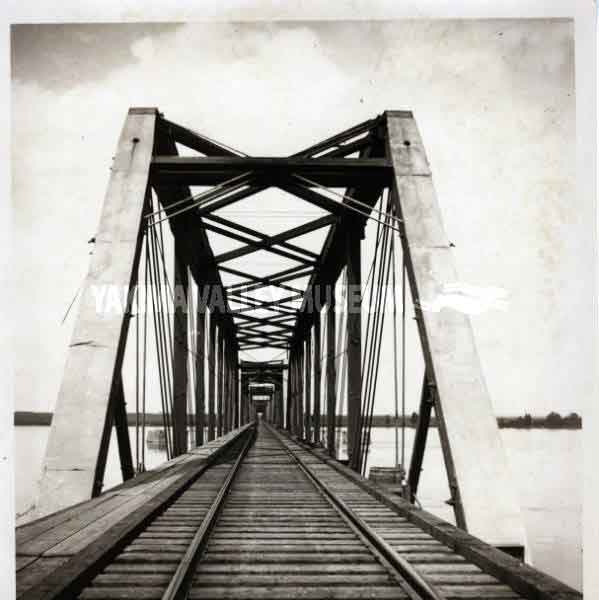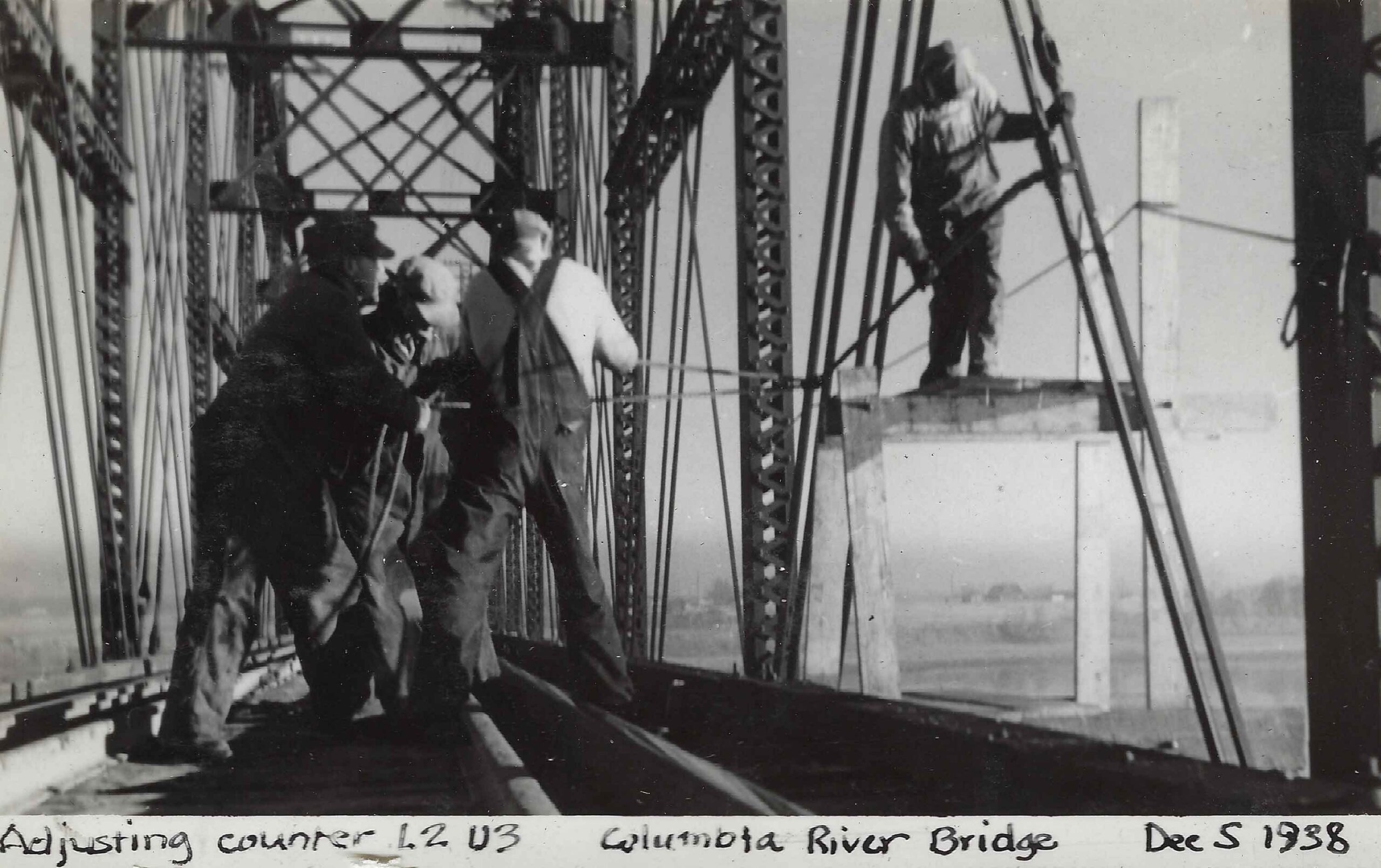
In August 1883 the NP had completed its line from St. Paul to Tacoma WA. However the route involved using the Oregon Railway and Navigation rail lines between Pasco and Portland, crossing the Columbia by ferry to Tacoma. Problems arose with that arrange-ment so the NP surveyed a route via Yakima and Ellensburg over Stampede Pass and completed in July 1887. The route was built not only in haste but budget concerns mandated that the bridges would be built out of wood and later retrofitted with steel when the profit of the lines allowed it. The Columbia River was a totally different matter because of its length therefore postponed. Meanwhile the Fredrick Billings Ferry (right) hauled the locomotive and 7 cars from Pasco on the north side to Kennewick on the south.

The temporary bridge that was wiped out by an ice dam. Date on the picture is Feb 1, 1888. Note that pier 8 is missing. (courtesy of Erick Thomson collection)
The wooden bridge would endure until 1907 after mainline west would be retrofitted with steel bridges. The Pasco side would have 6 through truss spans, Kennewick side with 3 and a swing bridge in the center to allow shipping to pass. (some sources say 5 on the Pasco side but my pics say 6; you be the judge)
Despite the bottleneck with both the ferry and the Stampede Pass switchbacks the line made profit which was used to build a new tunnel and a new bridge. So on Dec. 13, 1887 the first train ran across the temporary bridge. An ice flow did damage to the piers and closed it until July 14, 1888 with the completion of masonry piers.
Lucy Scudder, a resident and first settler in Moxee, recalls when her family left Boston in July 1888, their train was the first passenger train to cross the new rebuilt bridge. A work train went ahead to ensure the bridge was safe. Then their train proceeded to cross. In her words, “The train went so slow you could see the water below and count the girders. It was so quiet that you could hear a pin drop.”. (Milk Bottles, Moxee, and Memories, courtesy of Yakima Valley Museum)
With the advent of the S class 10 wheeler locomotive longer trains could be pulled and so the wooden bridge needed to be modified to haul the heavier traffic. In 1905 construction began to retrofit the bridge to steel.

The above picture was a combination of 2 photos which explains the same train in 2 different places.




























